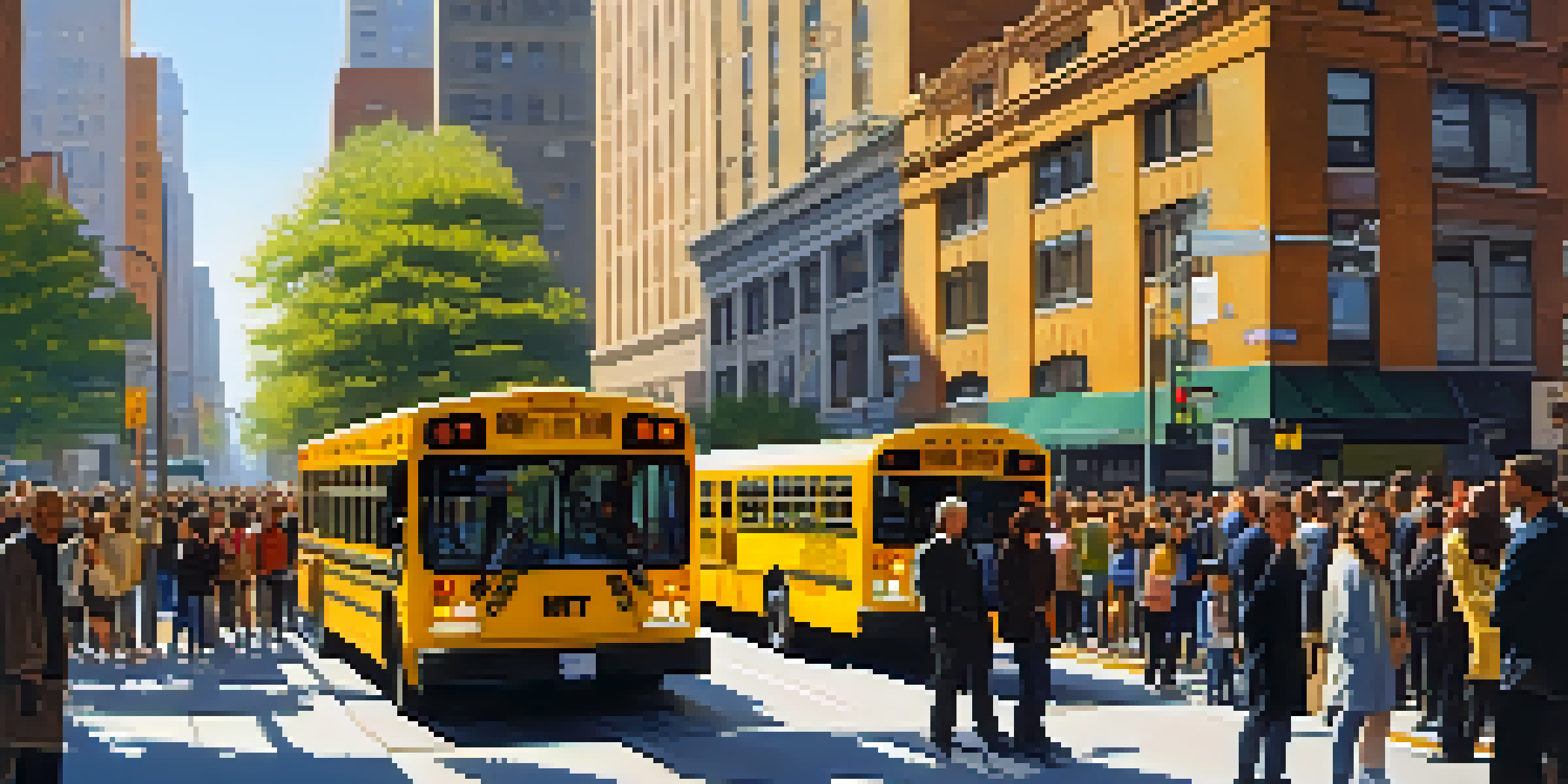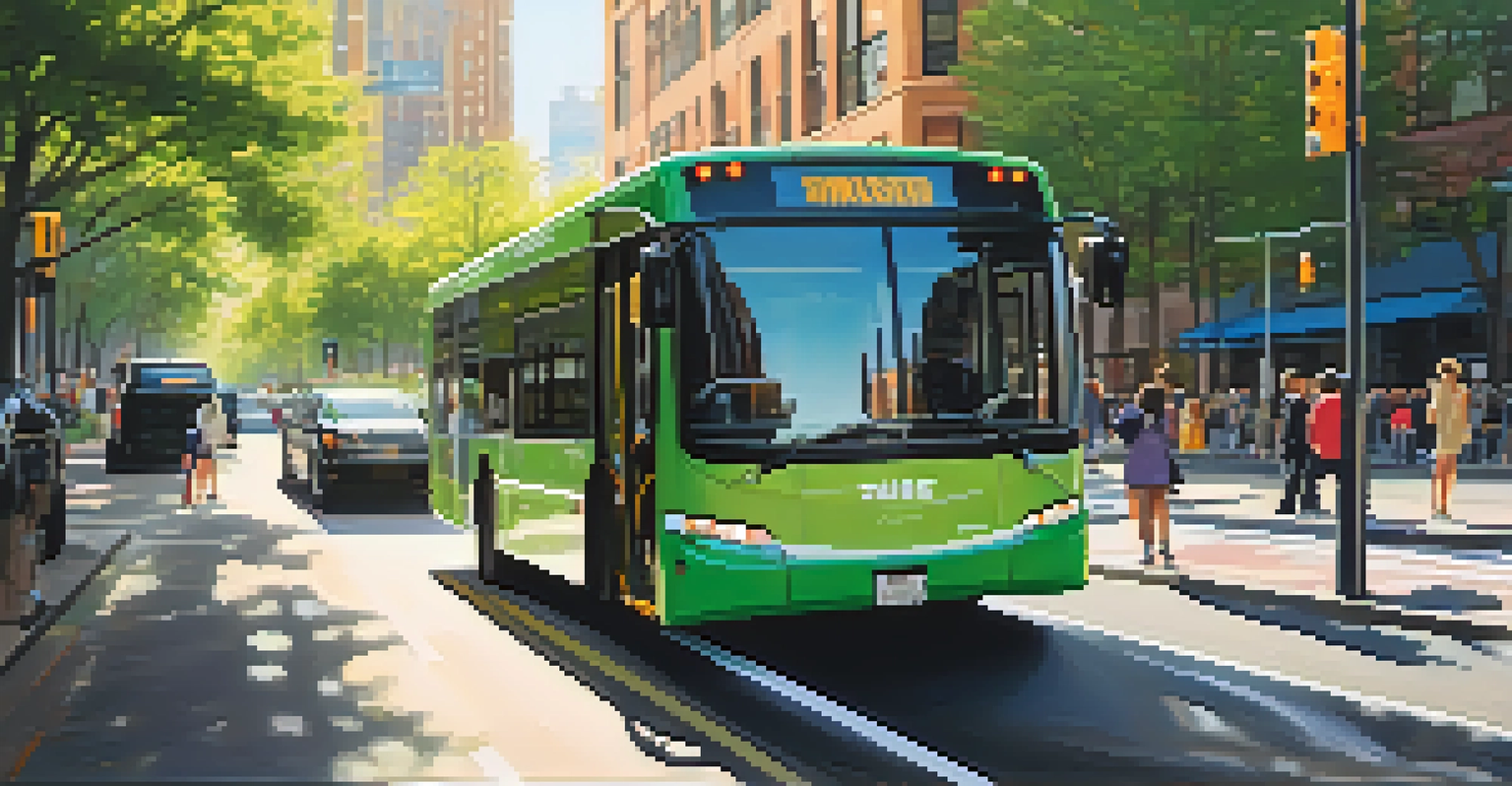The Role of NYC Buses in Public Transportation Development

Overview of NYC's Public Transportation System
New York City's public transportation system is a complex web of services designed to move millions of residents and visitors daily. At its core lies the Metropolitan Transportation Authority (MTA), which oversees subways, buses, and trains throughout the city. While the subway often steals the spotlight, buses play a crucial role in ensuring accessibility and connectivity across all five boroughs.
Public transportation is a lifeline for many, offering access to opportunities and services that would otherwise be out of reach.
Buses serve areas where subway lines may not reach, providing vital links between neighborhoods and key destinations. This versatility makes them essential for both daily commuters and those exploring the city. With over 5,700 buses in operation, NYC's bus network is one of the largest in the world, accommodating a diverse range of travel needs.
Related Resource
Moreover, the integration of buses with other forms of public transit enhances the overall efficiency of the transportation system. By enabling seamless transfers between buses and subways, the MTA strives to create a cohesive travel experience for everyone.
Historical Evolution of NYC Buses
The history of buses in New York City dates back to the late 19th century, when horse-drawn carriages were replaced by motorized vehicles. This transition marked the beginning of a new era in urban transportation. By the 1920s, buses had begun to supplement the existing streetcar lines, providing greater flexibility and reach throughout the city.

As the demand for public transit grew, so did the bus network, adapting to the changing landscape of NYC. The introduction of articulated buses in the 1970s allowed for greater capacity, accommodating the increasing number of passengers. Today, advancements like electric buses are paving the way for a more sustainable future.
Buses Connect NYC's Diverse Communities
NYC buses play a crucial role in connecting neighborhoods and ensuring accessibility for residents across all five boroughs.
The evolution of NYC buses reflects broader trends in urban planning and transportation. As neighborhoods evolve and populations shift, the bus system continues to adapt, ensuring it meets the needs of residents and visitors alike.
Buses: A Key Component of Accessibility
One of the most significant roles buses play in NYC's public transportation development is enhancing accessibility. Many neighborhoods, especially those in outer boroughs, rely heavily on buses to access essential services, jobs, and educational opportunities. This reliability is crucial for individuals who may not have access to private transportation.
Buses are the veins of a city, connecting its heart with every corner and ensuring that no resident is left behind.
Moreover, the MTA has made strides to improve accessibility for people with disabilities. The introduction of low-floor buses and the installation of ramps and designated seating areas make public transit more inclusive. These efforts are vital in ensuring that everyone, regardless of their mobility challenges, can navigate the city with ease.
Related Resource
The role of buses in enhancing accessibility extends beyond physical access; they also contribute to social integration. By connecting diverse communities, buses help foster interaction and engagement among residents, enriching the cultural fabric of NYC.
Environmental Impact of NYC Buses
In recent years, environmental concerns have become increasingly important in public transportation discussions. NYC buses, particularly those powered by fossil fuels, contribute to greenhouse gas emissions and urban pollution. However, the MTA's commitment to sustainability is driving a transformation in the bus fleet.
The introduction of electric and hybrid buses represents a significant step toward reducing the carbon footprint of public transportation in NYC. These cleaner alternatives not only decrease emissions but also improve air quality, benefiting both the environment and public health. Initiatives like these are crucial as cities worldwide strive for greener transportation solutions.
Sustainability Drives Bus Innovations
The MTA is transitioning to electric and hybrid buses to reduce emissions and improve air quality in the city.
By investing in a more sustainable bus fleet, NYC is setting an example for other urban centers. The shift toward electric buses demonstrates the potential for public transit to be both efficient and environmentally friendly, paving the way for a cleaner future.
Challenges Facing NYC's Bus System
Despite their importance, NYC buses face a number of challenges that impact their effectiveness. Traffic congestion is a significant hurdle, slowing down bus routes and frustrating passengers. With many buses operating in highly populated areas, delays can become commonplace, leading to a less reliable travel experience.
Additionally, funding constraints often limit the MTA's ability to improve infrastructure and expand services. Budget cuts can lead to reduced routes, affecting the communities that rely on them the most. Addressing these challenges requires a concerted effort from city leaders, transit advocates, and the public.
Related Resource
Innovative solutions, such as dedicated bus lanes and real-time tracking apps, are being implemented to tackle these issues. By focusing on improving bus efficiency and reliability, NYC can enhance the overall public transportation experience for its residents.
The Future of NYC Buses
Looking ahead, the future of NYC's bus system is poised for transformation. With the ongoing development of smart technology, buses may soon be equipped with advanced systems that optimize routes and improve scheduling. These innovations can greatly enhance the efficiency of public transit, benefiting both passengers and operators.
Moreover, community engagement will play a crucial role in shaping the future of NYC buses. By involving residents in planning processes, the MTA can better understand the needs and preferences of diverse populations. This collaborative approach ensures that the bus system remains relevant and effective.
Challenges Impact Bus Efficiency
Traffic congestion and funding constraints pose significant challenges to the effectiveness and reliability of NYC's bus system.
As NYC continues to grow and evolve, so too will its bus system. Embracing innovation and prioritizing community input will be key to ensuring that buses remain a vital component of the city’s transportation landscape.
Conclusion: Buses as the Backbone of NYC Transit
In conclusion, NYC buses are more than just a mode of transportation; they are an integral part of the city's public transit ecosystem. Their historical evolution, commitment to accessibility, and growing focus on sustainability highlight their importance in urban mobility. As challenges arise, the resilience and adaptability of the bus system will be crucial for the future.
Buses connect neighborhoods, enhance accessibility, and contribute to a greener environment, making them essential to the city's social fabric. By investing in improvements and embracing innovation, NYC can ensure that its bus system continues to thrive.

Ultimately, the role of NYC buses in public transportation development is a testament to the city's dedication to serving its residents. As we look to the future, it's clear that buses will remain a fundamental part of New York City's journey.